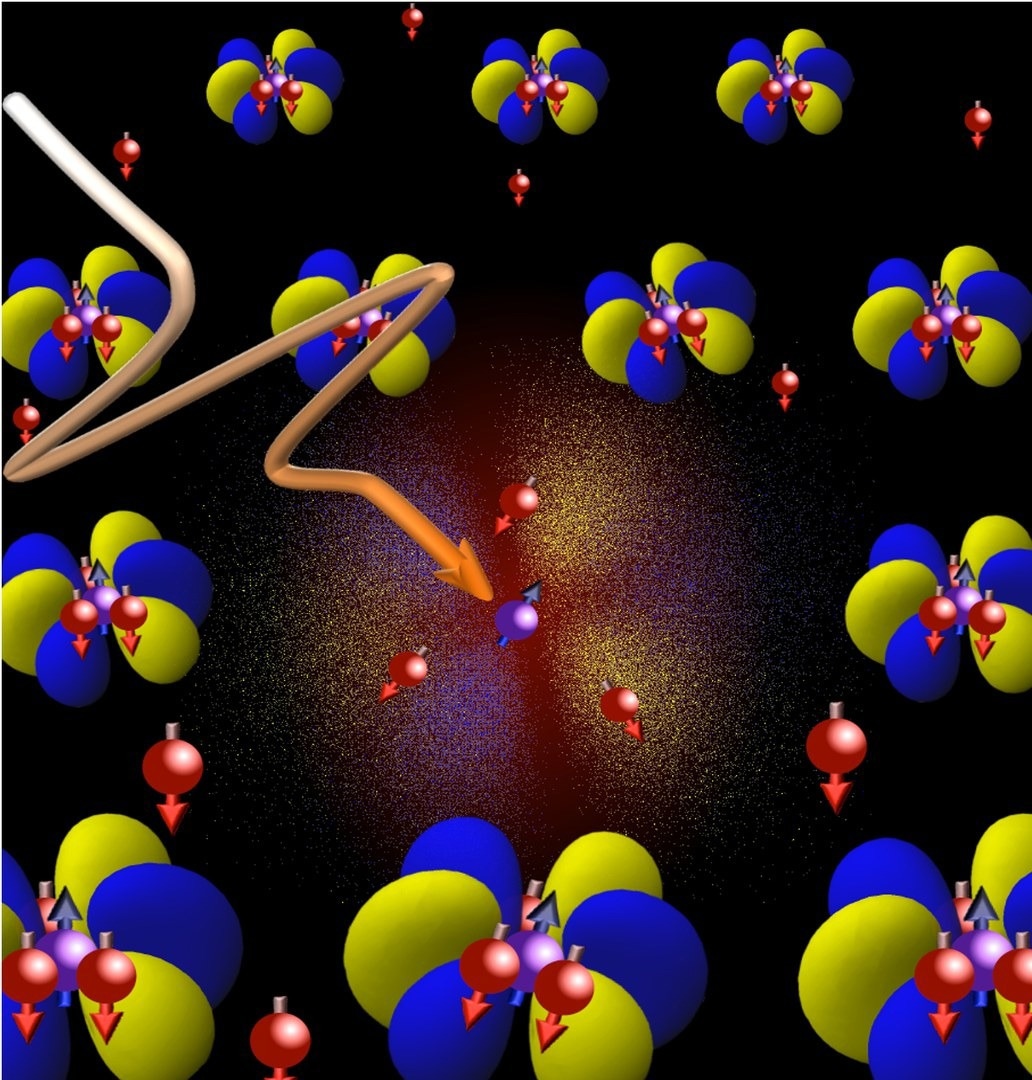Several substances alter their properties when they are subjected to cooling below a certain critical temperature. Such a phase transition takes place, for instance, when water freezes.

Artist’s view of a quasiparticle-composed of localized and mobile electrons, here broken up by an ultrashort light pulse. Image Credit: University of Bonn
But in some metals, there are phase transitions that are not present in the macrocosm. They emerge due to the special laws of quantum mechanics that apply in the realm of the smallest building blocks of nature.
It is believed that the idea of electrons as carriers of quantized electric charge will no longer apply next to such exotic phase transitions. At the University of Bonn and ETH Zurich, scientists have discovered a method to prove this directly. Their outcomes enable deep knowledge of the strange world of quantum physics.
The publication has currently been reported in the Nature Physics journal.
If users cool water below 0 °C, it solidifies into ice. In the process, it suddenly alters its properties. As ice, for instance, it consists of a much lower density.
As far as physics is concerned, this is a phase transition. However, there are also phase transitions in which characteristic features of a substance alter slowly. If, for instance, an iron magnet is heated up to 760 °C, it loses its attraction to other pieces of metal—it is then no longer ferromagnetic but paramagnetic.
This does not take place suddenly, but continuously. The iron atoms act like small magnets. At low temperatures, they are oriented parallelly to each other. While subjected to heating, fluctuation is heavy around this rest position until they are entirely randomly aligned, and the material fully loses its magnetism.
Hence, while the metal is being heated, it could be both paramagnetic and ferromagnetic.
Matter Particles Cannot be Destroyed
Hence, the phase transition occurs slowly, so to speak, until eventually, all the iron is paramagnetic. Along the way, the transition decelerates more and more. This behavior is characteristic of all continuous phase transitions.
We call it ‘critical slowing down. The reason is that with continuous transitions, the two phases get energetically closer and closer together.
Dr. Hans Kroha, Professor, Bethe Center for Theoretical Physics, University of Bonn
It is similar to positioning a ball on a ramp: It further rolls downhill, but the smaller the variation in altitude, the more gradually it rolls. When iron is heated, the energy difference between the phases reduces more and more, as the magnetization disappears increasingly during the transition.
Such a “slowing down” is considered normal for phase transitions depending on the excitation of bosons. Bosons are particles that “generate” interactions (on which, for instance, magnetism is based). At the same time, matter is not made up of bosons but of fermions. Electrons, for instance, belong to the fermions.
Phase transitions are based on the fact that particles (or the phenomena they activate) disappear. This implies that the magnetism in iron turns out to be smaller and smaller as fewer atoms have been aligned in parallel.
Fermions, however, cannot be destroyed due to fundamental laws of nature and therefore cannot disappear.
Dr. Hans Kroha, Professor, Bethe Center for Theoretical Physics, University of Bonn
That is the reason why they are never a part of phase transitions
Electrons Turn into Quasi-Particles
Electrons can be bound in atoms; they then consist of a fixed place in which they cannot exist. At the same time, some electrons in metals are freely mobile—which is why such metals could also conduct electricity. In some exotic quantum materials, both varieties of electrons could develop a superposition state. This produces what is called quasiparticles.
In a sense, they are immobile and mobile concurrently—a feature that is possible only in the quantum world. Such quasiparticles—unlike “normal” electrons—could be ruined at the time of a phase transition. This implies that the properties of a continuous phase transition could also be noted there, especially critical slowing down.
Until now, this effect can be noted just indirectly in experiments. Scientists headed by theoretical physicist Hans Kroha and Manfred Fiebig’s experimental group at ETH Zurich have currently come up with a new method that enables direct identification of the collapse of quasiparticles at a phase transition, especially the associated critical slowing down.
This has enabled us to show for the first time directly that such a slowdown can also occur in fermions.
Dr. Hans Kroha, Professor, Bethe Center for Theoretical Physics, University of Bonn
Kroha is also a member of the Transdisciplinary Research Area “Matter” at the University of Bonn and the Cluster of Excellence.
“Matter and Light for Quantum Computing” of the German Research Foundation. The outcome adds up to a better insight into the phase transitions in the quantum world. In the long term, the outcomes might also be beneficial for applications in quantum information technology.
The study was performed in partnership with ETH Zurich and the University of Bonn. The work was financially supported by the Swiss National Science Foundation (SNF) and the German Research Foundation (DFG).
Journal Reference
Yang, C-J., et al. (2023) Critical slowing down near a magnetic quantum phase transition with fermionic breakdown. Nature Physics. doi.org/10.1038/s41567-023-02156-7.